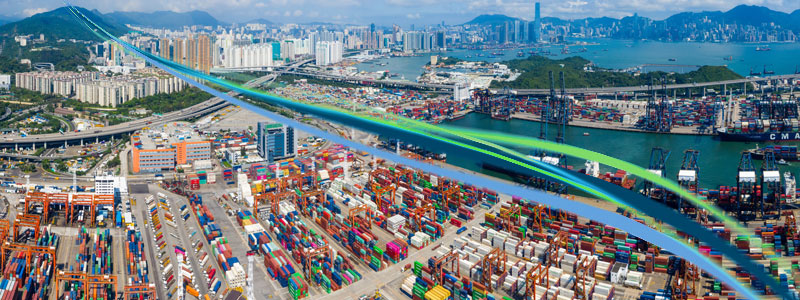Sea freight is the largest method of shipping for international import and export business. Competitive prices and multiple options make sea freight the first choice for global trade. When it comes to shipping from China, businesses need experienced freight forwarders like our team at Supreme Freight who are familiar with transporting for companies of differing sizes as well as to a wealth of countries. As a China freight agent, we hope that you are able to gain something from the knowledge and experience shared in this article.
Trade Terms
Get accustomed to all the codes and terminology with our simple breakdown:
Incoterms – A term given to one of the common terms of trade. When applied to buying goods from China, there are four incoterms. Each of the incoterms are assigned a code relating to how far the suppliers transport the shipment to. The codes of these incoterms are as follows:
EXW – Transport as far as the factory/manufacturer
FOB – Transport as far as a nearby port in China
CIF – Transport to a nearby port in your country
DAP/DDU – Transfer to your place of business
The codes can be split into two further categories:
- EXW/FOB Category – The buyer can utilise your own freight agent and liaise with them directly regarding payment.
- The Other Category – The buyer uses their own freight company and your company subsidises that.
When looking for a freight forwarder, it is important that you understand these terms and codes to enable them to know your requirements when shipping your goods to China.
Container Types
It is important to know the following commonly used container types:
- 20’GP – Allows for 20ft of storage. 20’GP is designed to carry more weight than voluminous cargo. E.g. Minerals, metal and machinery
- 40’GP – Allows for 40ft of storage. 40’GP is designed to carry more voluminous cargo than heavy cargo. E.g. Furniture, tyres, and toys
- 40’HC – Allows for 40ft of storage for shipments of a great height.
Although the volume of the 40’ containers are double the volume of the 20’, they are still bound to the same weight restriction that China applies to its exports which is no more than 27-28 tons. The ocean rates for a 40’ container shipped from China are less than two 20’ containers and it is no extra cost from a 40’ container for a 40’HC.
Freight forwarders are also knowledgeable of these commonly used container types. Knowing this information upfront will allow the freight forwarder to help and advise you with the right service.
Shipment Type
Shipment types come in the following two categories:
- Full Container Load (FCL) – In which a company fills a whole container with their own goods. Containers can be from 20 – 45 feet long.
- Less than Container Load (LCL) - Where different companies share the same container and load their shipments into it. This would then get split once it reaches port.
In order to ascertain what shipment type is best for your business you need to consider the packaging that your shipment requires whilst being transported, if you select an LCL, would it be better for your shipment to use a courier or decide whether it is possible to use an FCL.
Major Ports
Each port has a different charge for FCL and LCL containers. The breakdown of the Chinese ports are as follows:
- Shanghai – This major city enjoys the most economically developed of everything. From where it is located, it serves interior provinces via river ports along the waterway that extends from it.
- Shenzen – This port is accessible to Hong Kong and the Pearl River Delta making it another key port for the South of China.
- Ningbo-Zhousan – This port serves both Ningbo, which has good connections with Central and Western China and Zhejiang, a wealthy region with a manufacturing industry.
- Hong Kong – Fastly expanding into the ‘international shipping service hub of the Far East,’ Hong Kong provides 340 container liner services per week, connecting to around 470 destinations worldwide.
- Guangzhou – Historically, a key centre of trade in China, the port is striving to be the international shipment hub for the Maritime Silk Road component. It is a port that provides options for importers, exporters, third party logistic companies and ocean carriers with its reduced port and berthing fees.
- Qingdao – The most important port of Northern China. It is located next to the Bohai Bay region of which it serves.
- Tianjin – This port is second only to Qingdao port in capacity in Northern China. The port’s container handling business are developing additional domestic and international routes.
- Xiamen – The port is located at the mouth of the Jiulongjiang River and has over 68 shipping routes to over 50 countries including Kaohsiung in Taiwan.
- Dalian – This port is located at the most northern ice-free port of China and is the largest port in North East China serving seaports in East Asia, North Asia, and the Pacific Rim.
Researching into the port that best serves where your shipment will be transported to, will enable your freight forwarder to connect you with our most suitable partners.
For a consultation and advice on your shipment,
get in touch with us and we will do our best to help.
